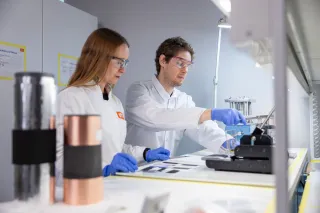In the future, it will be possible to control a paper machine on the basis of its carbon footprint. VTT Technical Research Centre of Finland is developing a software tool for on-line life cycle assessment that offers information to the operators of production equipment or an entire plant concerning the impacts of operational procedures on product-based environmental loading.
Climate change and increasing shortages of natural resources are encouraging business enterprises to clarify how their products and services are burdening the environment throughout their entire life cycle. Methods include the calculation of carbon footprints, acidification or eutrophication of waterways, use of fossil raw materials and rare minerals, and nitrogen and sulphur emissions. However, the means to understand the environmental impacts of emissions caused during production on a real time basis are still inadequate.
There are several advantages to monitoring production-based environmental impacts in real time. Not only can processes be optimised more precisely, but all employees participating in the control process can also see the effects on the environment resulting from their decisions. For example, the operator of a paper machine can see, in real time, how the running of the machine impacts its carbon footprint.
VTT is developing an on-line LCA software tool that provides data to the operators of production equipment, a process section or an entire plant concerning the impacts of procedures on production- and product-based environmental loading. The system reacts to changes made during production and provides its users with information on environmental loading related to these changes.
The system also takes the procurement of raw materials into consideration in the life cycle assessment.
VTT's research scientists have tested the modelling tool by connecting it to a distillation column control system at Tampere University of Technology. The test indicated that the method is technically feasible. Introducing the modelling tool to the data transfer chain of the entire plant as well as to its historical materials data still requires cooperation with the process facilities and automation suppliers.
This project has received funding from the European Union's Horizon 2020 research and innovation programme under grant agreement No 723661.



